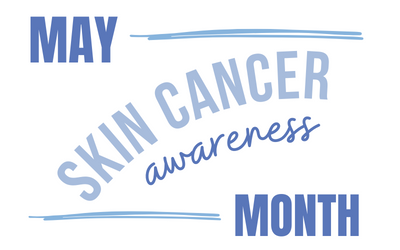When it comes to skin cancer, the sun doesn’t discriminate based on age, gender or beliefs. Regardless of who you are, prolonged exposure to the sun’s rays without adequate protection poses a real threat to your skin, increasing the risk of developing skin cancer.
It’s a simple equation: the more time you’ve spent basking in the sun over the years, the greater the accumulation of skin damage. Even if you don’t experience immediate sunburn, continuous exposure adds up, raising the likelihood of skin cancer development.
Startlingly, a single blistering sunburn during childhood or adolescence can more than double your chances of developing melanoma later in life. This underscores the importance of instilling sun-safe habits early on and maintaining them throughout adulthood.
Skin Cancer Awareness Month in May serves as a crucial reminder for everyone to prioritize skin health. Heightened awareness translates to better sun protection practices, such as wearing protective clothing and diligently applying sunscreen during outdoor activities.
Without proper protection, your skin absorbs a staggering 95 percent of sunlight, leaving only 5 percent to reflect. While a sun-kissed glow may seem appealing, it often signifies overexposure and sets the stage for various skin issues, including the development of skin cancer.
Understanding the Facts about Skin Cancer
- UV radiation from the sun remains the primary culprit behind skin cancer, accounting for a staggering 90% of cases attributed to prolonged exposure.
- Skin cancer manifests in three main types: Basal Cell Carcinoma (BCC), Squamous Cell Carcinoma (SCC), and malignant melanoma, each presenting distinct characteristics and risks.
- While BCC and SCC typically appear in sun-exposed regions, melanoma, though less common, poses the highest mortality risk and can emerge anywhere on the body.
- Certain risk factors, such as fair skin, family history of skin cancer, and a history of severe sunburns, heighten your susceptibility to skin cancer.
- Understanding the “ABCDEs” of skin health—Asymmetry, Border irregularity, Color variation, Diameter larger than a pencil eraser, and Evolution or changes in moles—is crucial for early detection.
Promoting Sun Protection Practices
- Effective sun protection extends beyond sunscreen application.
- Wearing protective clothing, seeking shaded areas, and minimizing sun exposure during peak hours are essential strategies.
- When using sunscreen, opt for broad-spectrum protection with an SPF of at least 30, applying it 30 minutes before heading outdoors and reapplying every two hours, especially during extended sun exposure or water activities.
- Consult your physician, particularly if you take medications that heighten sun sensitivity. Regular skin exams, ideally on a monthly basis, aid in early detection and prompt treatment.

